Tom Wilson
An international model and queer artist who portrayed underrepresented southern Delaware people and experiences.
1946-1995,
Sussex County, DE

Tom Wilson was an openly gay artist who grew up in and spent the end of his life in Sussex County, Delaware. Wilson’s photorealistic painting style captured local Delaware scenes and underrepresented populations like people of color, farm laborers, and members of the LGBTQ+ community.
Despite his tragically short life, Thomas R. Wilson, better known as Tom Wilson, left behind a creative legacy of international impact. Wilson was an artist for nearly his entire life, and spent time creating paintings and exhibiting his work in New York City and throughout Europe. His career as a men’s clothing model from 1969 to 1980 also took him around the world to Europe, Africa, the Middle East, the Caribbean, among other places. Photos of Wilson appeared in top magazines like Vogue, Harper’s Bazaar, Cosmopolitan, and Time.
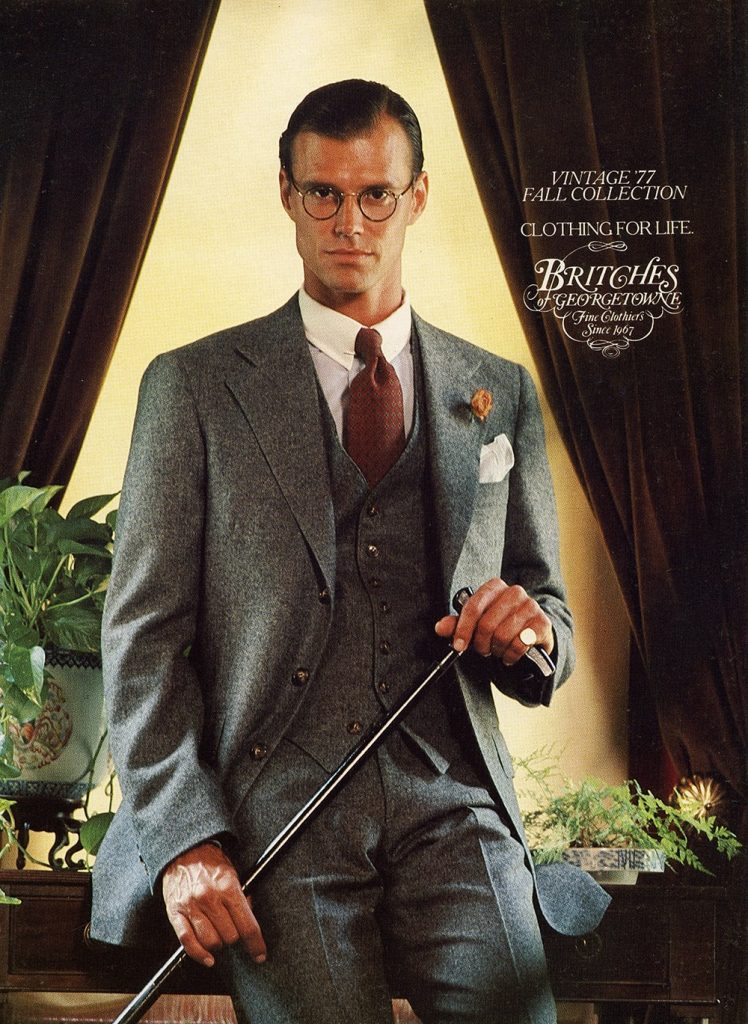

The subject matter of Wilson’s paintings varied from landscapes, cars, local architecture, animals, and the people of Sussex County. He depicted everyone from prominent business figures to farmers and drag queens. His hyper-realistic style was popular and showcased his interest in light and shadow. He earned a living through commissioned portraits of locals.
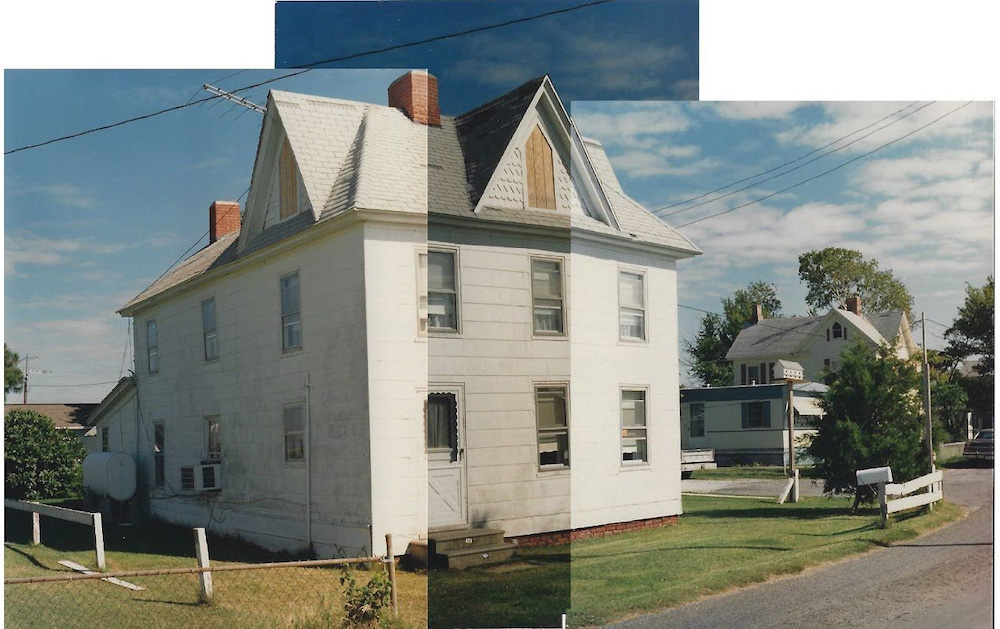
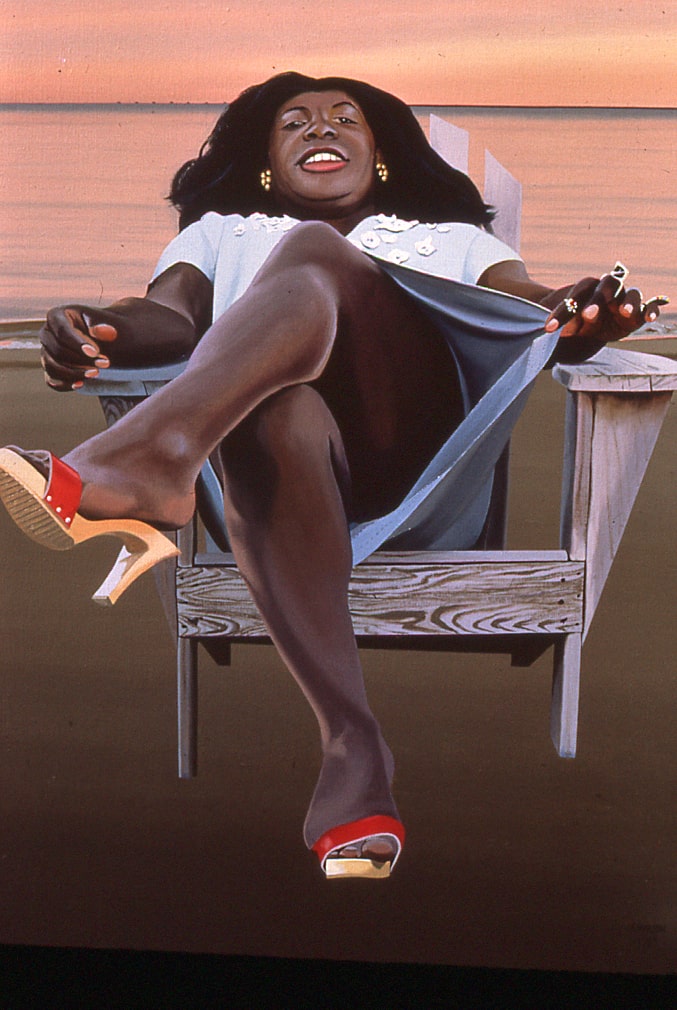
He did not work from a photo; rather, he used multiple photos to create combination images. The precise realism of his paintings is strikingly close to photographic clarity. A notable painting by Wilson that demonstrates his love for the queer community is an 1983 portrait painting of a Black gender non-conforming performer identified as “Wendell.”
Wilson was born in 1946 to parents Houston and Catherine “Kitty” Wilson and grew up on a farm in Georgetown, Delaware. Wilson’s artistic career began at a young age when he received art lessons from Sussex County artist, Dorothy Lewis, according to a May 18, 1983, article in the Sussex County newspaper, The Whale. But, according to Wilson, he had “always been a painter.”
Wilson attended boarding school at St. Andrew’s in Middletown, Delaware, where he took art lessons from renowned Delaware painter, Howard Schroeder. He then transferred to Moses Brown Quaker School in Rhode Island for his senior year of high school and honed his artistic talents. He went on to study fine arts at the Rhode Island School of Design and graduated in 1969 with a bachelor’s degree.
Shortly after graduation, Wilson moved to New York City where he maintained a studio until 1976. From his Greenwich Village studio, Wilson exhibited works in galleries, museums, group shows, and street fairs. He eventually moved to Paris, France, to earn a living painting commissioned portraits. He exhibited his paintings in France, Germany, and Italy while also earning income as a men’s clothing model.

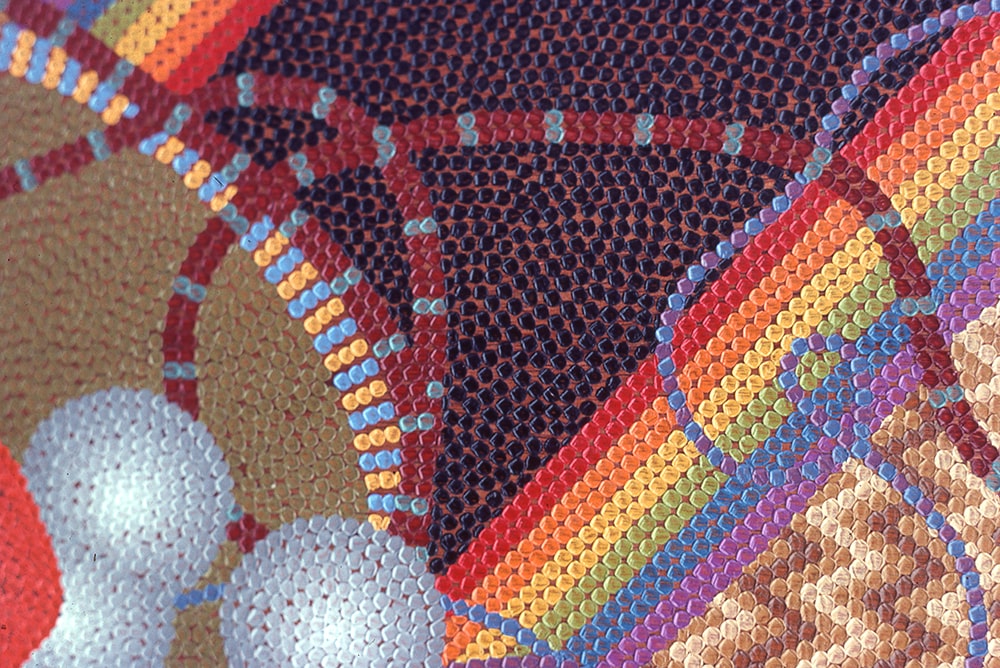
Wilson spent his personal time working on his “dot” paintings, which he described in a 1983 article in The Whale as a technique that he developed over a period of thirteen years in which he would apply dots of oil paint to wood panels, amassing the dots in shapes and lines using gradients of colors and interspersing them with shapes of solid color. He described his art as “bright, daylit scenes of houses, streets and people, drawing ideas from life, photographs, and my imagination.”

In 1981, Wilson returned to Lewes, Delaware, to take care of his ill mother. Here, he met his life partner, Leo Medish (1953-2013), former chef of the Back Porch Café in Rehoboth Beach, a restaurant historically known for serving the queer community. Wilson acted as artistic director of the Back Porch Café, scheduling fine art exhibitions and exhibiting his own work there annually. In 1985, Wilson was featured in Delaware Today magazine’s “85 People to Watch in ’85.”
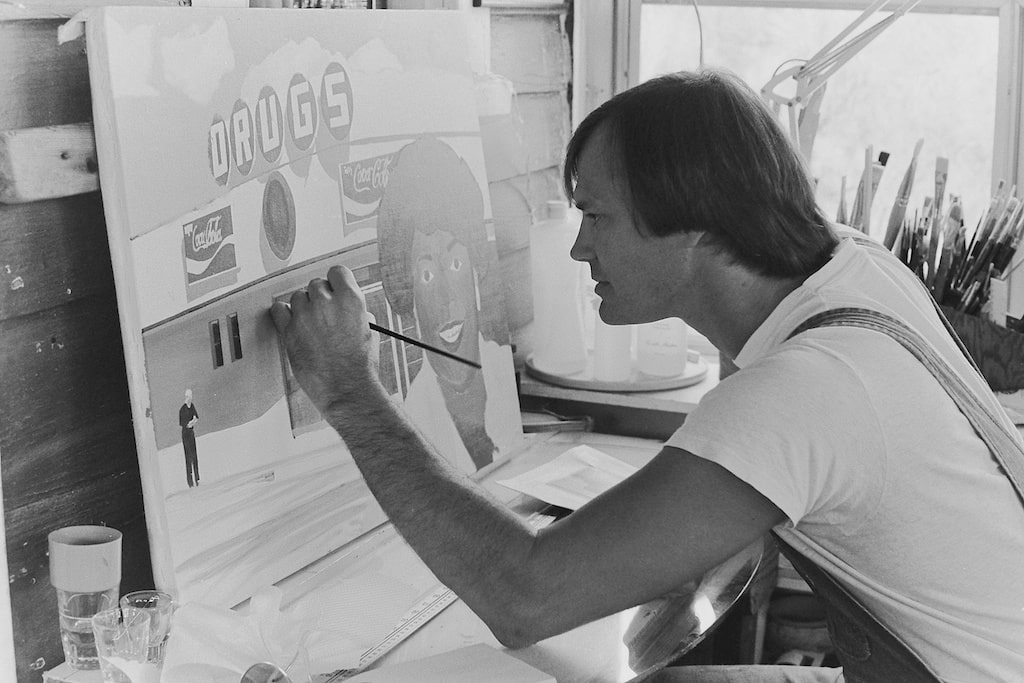
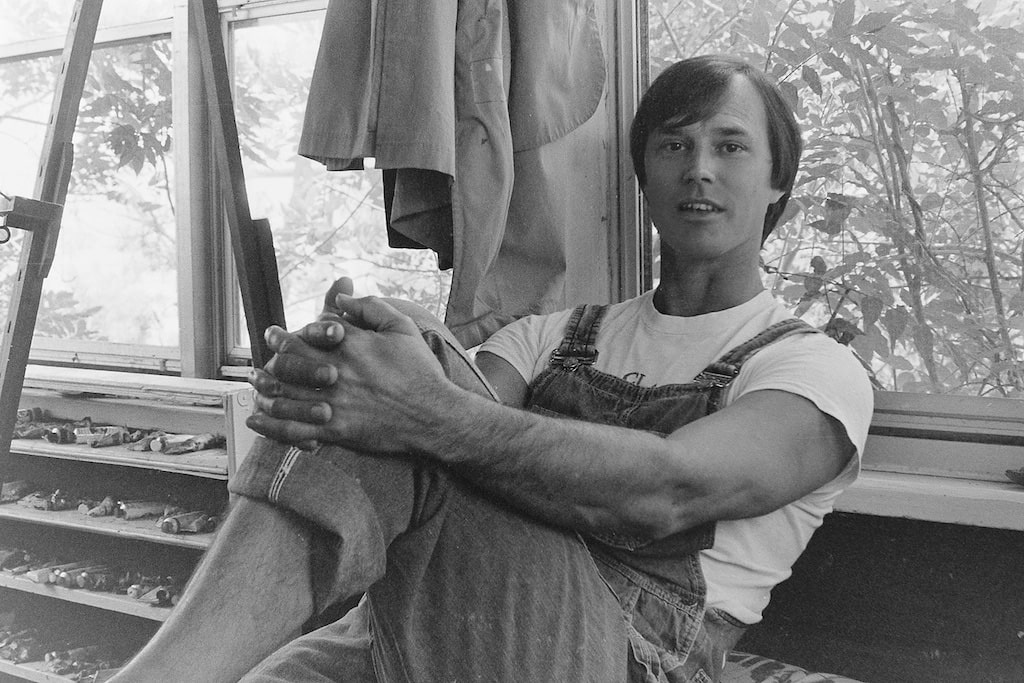
In a May 14, 1993, letter to the Pollock-Kraser Foundation, Wilson applied for funding to cover his professional work and medical expenses and said:
The Delmarva Peninsula is an emotional tarbaby to me. I am truly a native son in that both sides of my family settled here some 300 years ago and I am related (literally) to nearly everyone in some way or another. Having been away for so long I find that my views are different from those of most Delmarvans. Long an isolated region, in many ways the 20th Century has yet to dawn here. I love the low land. I know how light works on the field and trees and water. I appreciate how the people and the buildings relate to the land and each other. It is a deep stew of feelings I have about the place. I wanted my new work to address these things.
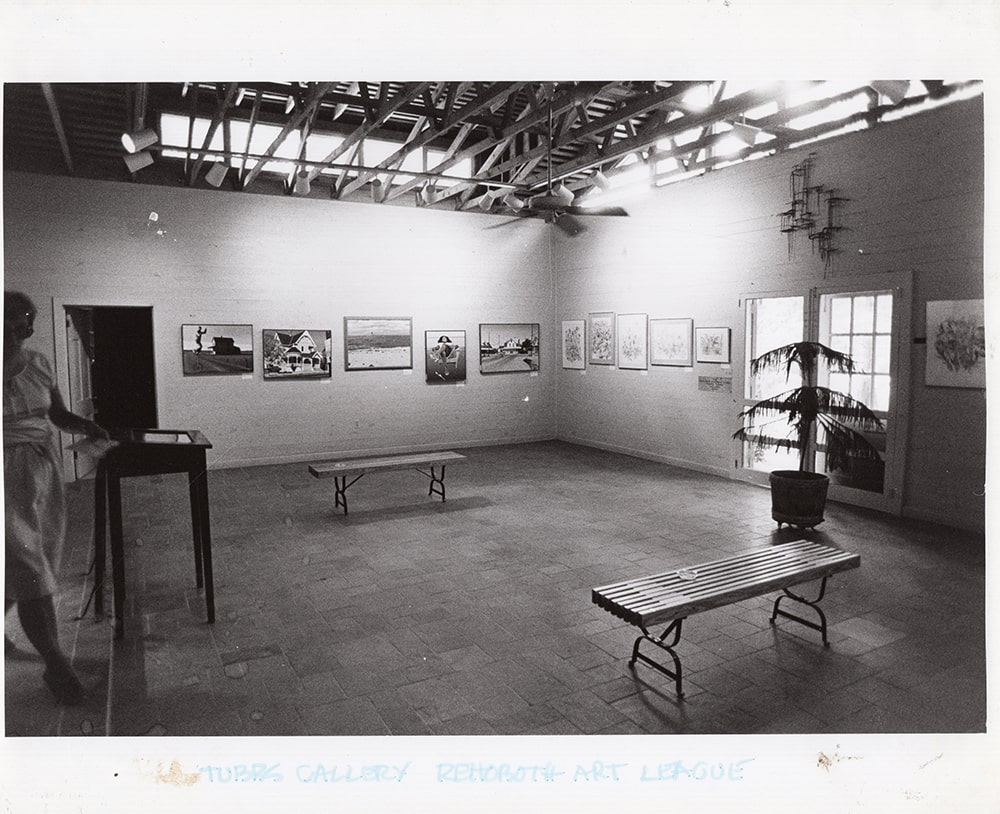
Wilson was diagnosed with HIV/AIDS in the early 1990s and, according to the 2020 short documentary about his life, The Luminous Life of Tom Wilson, knew he would not survive the virus. At the time, HIV/AIDS was not well understood by the general public even though it was claiming the lives of tens of thousands of people each year. As Wilson’s health declined, he was not able to produce the labor-intensive, photo-realistic portraits he was known for. He began painting in pastels and produced many vibrant paintings of florals in his garden. Wilson, only forty-nine, passed away of complications with AIDS over Memorial Day Weekend of 1995.
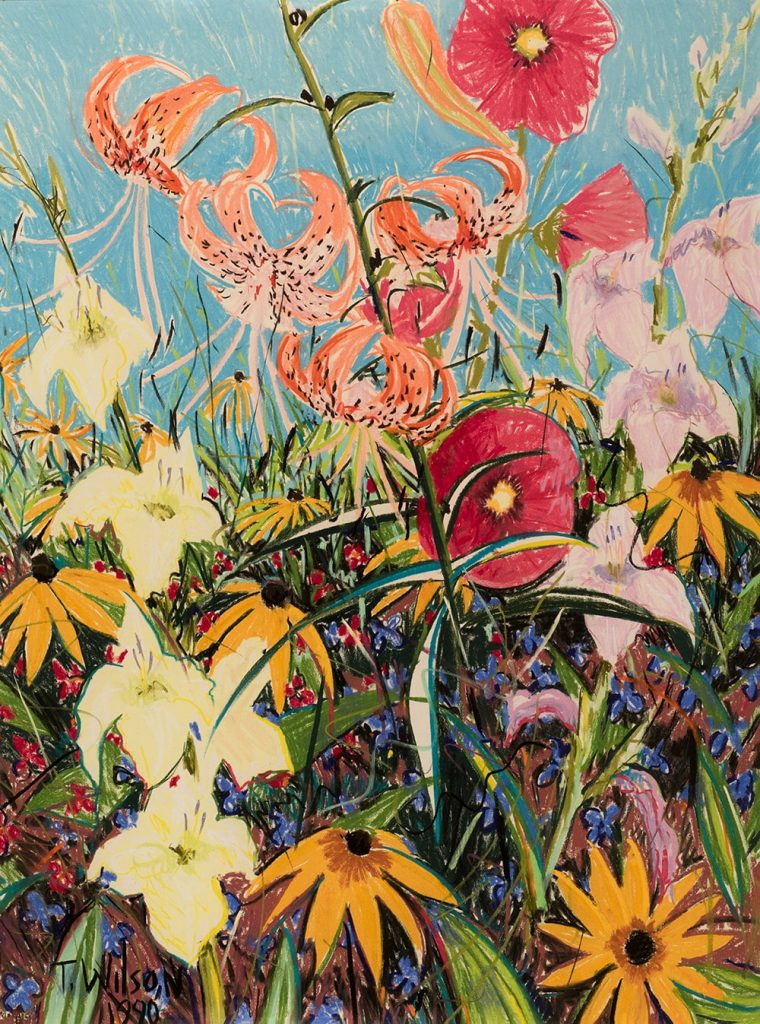
To honor his legacy, Wilson’s friends created a panel of the National AIDS Memorial Quilt. The NAMES Project began in 1985 and, as of 2023, is the largest community arts project in history with 50,000 individual panels dedicated to nearly 110,000 individuals. Wilson’s panel depicts him joyfully dancing with his partner, Medish, and is signed “Love, Leo, Jackie, Leslie + Gainor.” His panel was recently displayed in Rehoboth Beach for World AIDS Day 2023.

In The Luminous Life of Tom Wilson, Wilson’s friends describe how he was the first person they knew who was diagnosed and died of AIDS. The nineteen-minute short film, directed by Warren Lewis Allen, chronicles and honors Wilson’s impact on Sussex County and his loved ones.
Photo Courtesy: Keith Fitzgerald, Rehoboth Art League archives collection, and CAMP Rehoboth Community Center
Sources:
- “85 People to Watch in ‘85,” Delaware Today, January 1985
- The Luminous Life of Tom Wilson
- Tom Wilson: Super Realist/Surrealist exhibition catalog, 2022
- Tom Wilson’s Resumé c. 1983, Rehoboth Art League Archives


